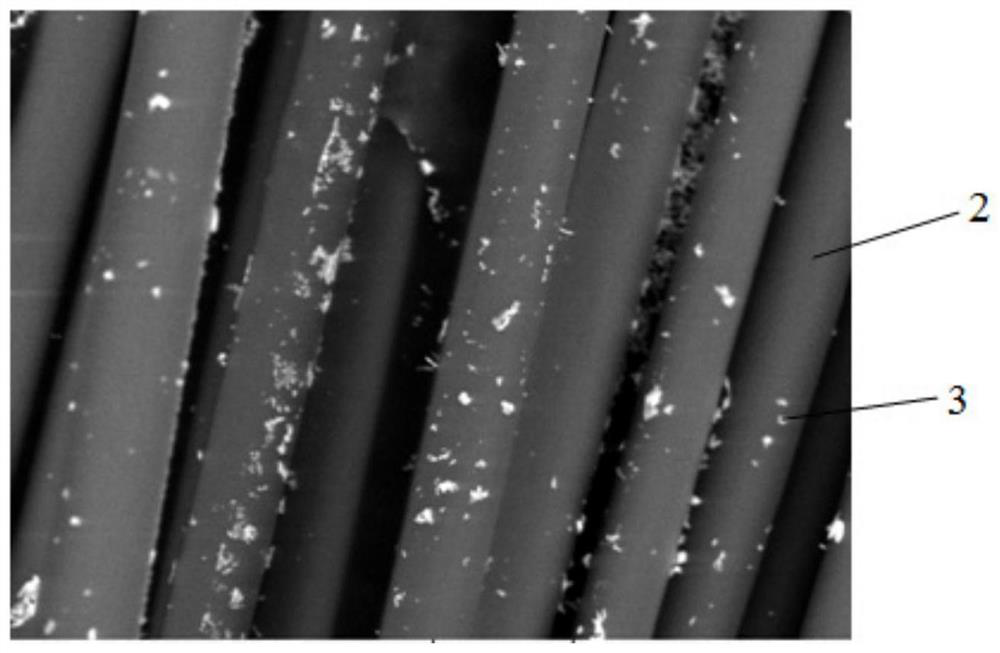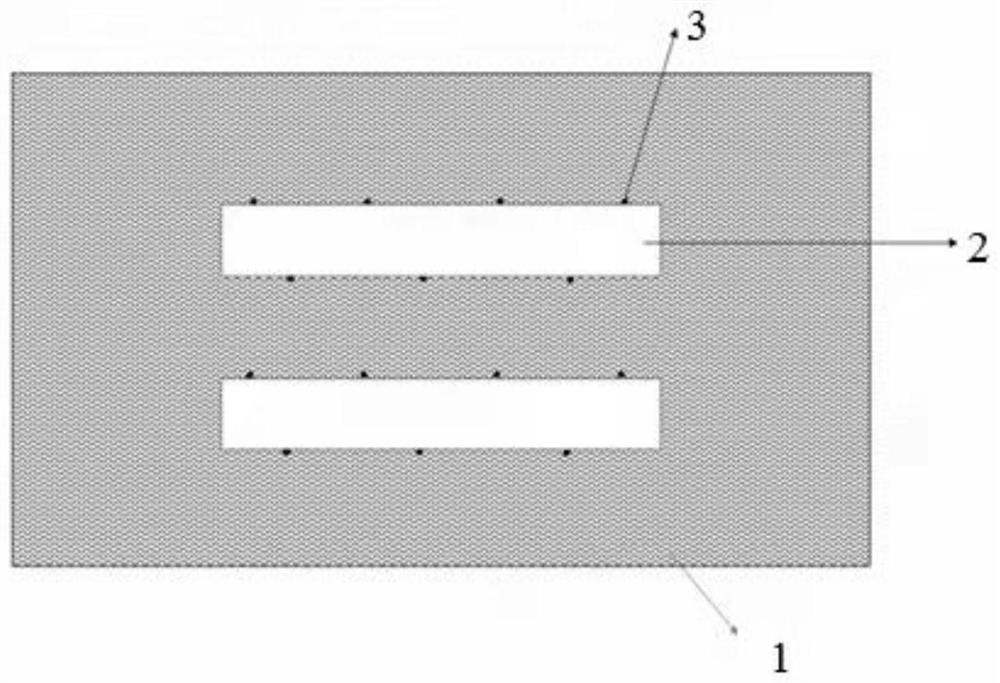Carbon fiber reinforced resin-based composite material interface microcell structure regulation and control method
A technology for reinforcing resin-based and composite materials, applied in the field of composite materials, can solve problems such as unstable treatment effects, and achieve stable treatment effects, uniform distribution, and strong pinning ability
- Summary
- Abstract
- Description
- Claims
- Application Information
AI Technical Summary
Problems solved by technology
Method used
Image
Examples
Embodiment 1
[0030] A carbon fiber-reinforced resin-based composite material interface micro-domain structure control method, comprising the following steps:
[0031] Step 1. Toray T700 chopped carbon fibers with a diameter of 6 μm to 7 μm and a length of 1 mm to 3 mm are placed in a Soxhlet extractor together with an organic solvent for extraction to remove sizing agents and impurities on the surface of the carbon fiber; the extraction temperature is 80 ° C, and the extraction The time is 24 hours. The organic solvent is made by mixing ethanol, acetone and tetrahydrofuran with a volume ratio of 1:1:1; then the extract is soaked in ethanol solution and aqueous solution for 10 minutes, and finally dried at 80°C to obtain a clean surface. carbon fiber;
[0032] Step 2, put the pure niobium target into the multi-arc ion plating head, as the cathode, the target purity is 99.9%; install the pretreated carbon fiber on the turntable in the vacuum chamber, and evacuate the vacuum chamber to 4×10 ...
Embodiment 2
[0037] A carbon fiber-reinforced resin-based composite material interface micro-domain structure control method, comprising the following steps:
[0038] Step 1. Put Toray T700 chopped carbon fibers with a diameter of 6 μm to 7 μm and a length of 3 mm to 5 mm together with an organic solvent for extraction in a Soxhlet extractor to remove sizing agents and impurities on the surface of the carbon fibers; the extraction temperature is 70 ° C, and the extraction The time is 15 hours. The organic solvent is made by mixing ethanol, acetone and tetrahydrofuran with a volume ratio of 1:5:5; then the extract is soaked in ethanol solution and aqueous solution for 5 minutes, and finally dried at 80°C to obtain a clean surface. carbon fiber;
[0039] Step 2, put the pure titanium target into the multi-arc ion plating arc head, as the cathode, the target purity is 99.9%; install the pretreated carbon fiber on the turntable in the vacuum chamber, and evacuate the vacuum chamber to 3×10 -...
Embodiment 3
[0044] A carbon fiber-reinforced resin-based composite material interface micro-domain structure control method, comprising the following steps:
[0045] Step 1. Toray T700 chopped carbon fibers with a diameter of 6 μm to 7 μm and a length of 4 mm to 6 mm are placed in a Soxhlet extractor together with an organic solvent for extraction to remove sizing agents and impurities on the surface of the carbon fiber; the extraction temperature is 50 ° C, and the extraction The time is 18 hours. The organic solvent is made by mixing ethanol, acetone and tetrahydrofuran with a volume ratio of 1:2:3; then the extract is soaked in ethanol solution and aqueous solution for 8 minutes, and finally dried at 80°C to obtain a clean surface. carbon fiber;
[0046] Step 2, put the pure tantalum target into the multi-arc ion plating arc head, as the cathode, the target purity is 99.9%; install the pretreated carbon fiber on the turntable in the vacuum chamber, and evacuate the vacuum chamber to 8...
PUM
| Property | Measurement | Unit |
|---|---|---|
| diameter | aaaaa | aaaaa |
| length | aaaaa | aaaaa |
Abstract
Description
Claims
Application Information
 Login to View More
Login to View More - R&D
- Intellectual Property
- Life Sciences
- Materials
- Tech Scout
- Unparalleled Data Quality
- Higher Quality Content
- 60% Fewer Hallucinations
Browse by: Latest US Patents, China's latest patents, Technical Efficacy Thesaurus, Application Domain, Technology Topic, Popular Technical Reports.
© 2025 PatSnap. All rights reserved.Legal|Privacy policy|Modern Slavery Act Transparency Statement|Sitemap|About US| Contact US: help@patsnap.com


